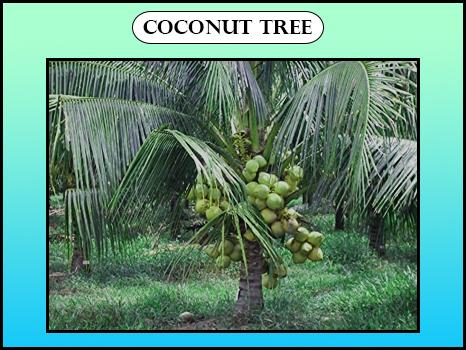
Explain the difference between Coconut and Mango tree as per the classification criteria.
Answer
577.8k+ views
Hint: Both the coconut tree and the mango tree differs by the presence of a number of the embryonic leaves in them.
Complete answer:
The coconut and the mango tree differ both in morphology and anatomy.


Note: The term coconut was derived from the Portuguese and Spanish word coco, meaning 'head' or 'skull' 16th-century. This term was introduced because the coconut shell resembles facial features. Its species name nucifera was derived from a Latin word meaning ‘nut-bearing’. It consists of liquid endosperm in the form of coconut water. The English word "mango" originated from the Malayalam word manga (or mangga) during the 15th and 16th centuries. It is the national fruit of various countries including India, the Philippines, and Haiti.
Complete answer:
The coconut and the mango tree differ both in morphology and anatomy.
| Coconut Tree | Mango Tree |
| Its botanical name is Cocos nucifera. | Its botanical name is Mangifera indica. |
| Coconut belongs to the family Arecaceae. | Mango belongs to the family Anacardiaceae. |
| It is monocot as per the classification. | It is dicot as per the classification. |
| The leaves have parallel venation. | The leaves have reticulate venation. |
| The fruit is not true, it is a dry drupe. | The fruits are fleshy stone drupe. |
| A full-size coconut weighs around 1.4 kg. | A full-size mango weighs around 240 g - 2 kg. |
| No tap roots or root hairs only has a fibrous root system. | The roots present are the taproots. |
| They are generally cross-pollinated plants. | They may be cross-pollinated or self-pollinated plants. |
| They generally grow in sandy salt-tolerant soil. | They are generally grown in warmer climates. |


Note: The term coconut was derived from the Portuguese and Spanish word coco, meaning 'head' or 'skull' 16th-century. This term was introduced because the coconut shell resembles facial features. Its species name nucifera was derived from a Latin word meaning ‘nut-bearing’. It consists of liquid endosperm in the form of coconut water. The English word "mango" originated from the Malayalam word manga (or mangga) during the 15th and 16th centuries. It is the national fruit of various countries including India, the Philippines, and Haiti.
Recently Updated Pages
Master Class 12 Business Studies: Engaging Questions & Answers for Success

Master Class 12 Economics: Engaging Questions & Answers for Success

Master Class 12 English: Engaging Questions & Answers for Success

Master Class 12 Maths: Engaging Questions & Answers for Success

Master Class 12 Social Science: Engaging Questions & Answers for Success

Master Class 12 Chemistry: Engaging Questions & Answers for Success

Trending doubts
What is meant by exothermic and endothermic reactions class 11 chemistry CBSE

Which animal has three hearts class 11 biology CBSE

10 examples of friction in our daily life

One Metric ton is equal to kg A 10000 B 1000 C 100 class 11 physics CBSE

1 Quintal is equal to a 110 kg b 10 kg c 100kg d 1000 class 11 physics CBSE

Difference Between Prokaryotic Cells and Eukaryotic Cells




